exoskeletons These industrial exoskeletons, which range from full-body braces to cutting-edge armor, are assisting in strengthening muscles and hastening recovery.
It doesn’t seem as far-fetched to think that we might someday be able to put on high-tech armor that gives us extraordinary strength. People are increasingly wearing Exoskeletons in daily life all over the world.
Exoskeletons are exterior devices that support, enclose, and safeguard their wearers during the day. The frame provides limbs with additional movement, strength, and endurance thanks to a network of electric motors.
According to ABI Research, more than 7,000 sold units in the manufacturing sector in 2018. According to another study, the market for exoskeleton suits could reach $6 billion by 2030. And just last week, scientists predicted that an exoskeleton resembling the iconic Iron Man armour might soon be accessible worldwide.
Since the first exoskeleton was created in 1965 for military usage, a lot has changed. It was a hydraulic and electrical bodysuit “Hardiman”, but it was too big and heavy to be of any use.
Advanced exoskeletons are now becoming a reality thanks to scientists and designers, enabling people across a variety of industries to carry out physically demanding activities and overcome challenges. Here are a few of them, followed by some notions to envision how exoskeletons might develop in the future.
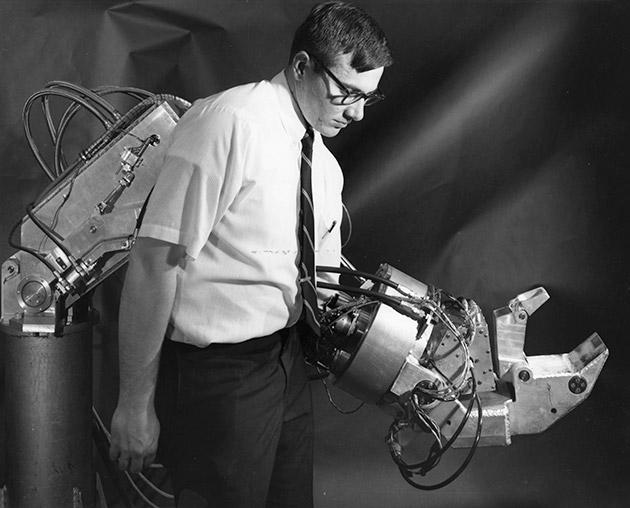
Noonee’s Chair without a Back
The Chairless Chair is the first item on the list. This adaptable, wearable sitting support lessens employees’ physical stress by encouraging excellent posture. When the user bends their leg, a shock absorber element in the gadget locks into a bent position. When the user stretches their legs and makes the necessary adjustments as they walk, the lock is released.
The Chairless Chair by Sapetti Design Studio for the Swiss business Noonee with the ultimate goal of assisting workers in being more productive by overcoming any constraints brought on by occupational ailments.
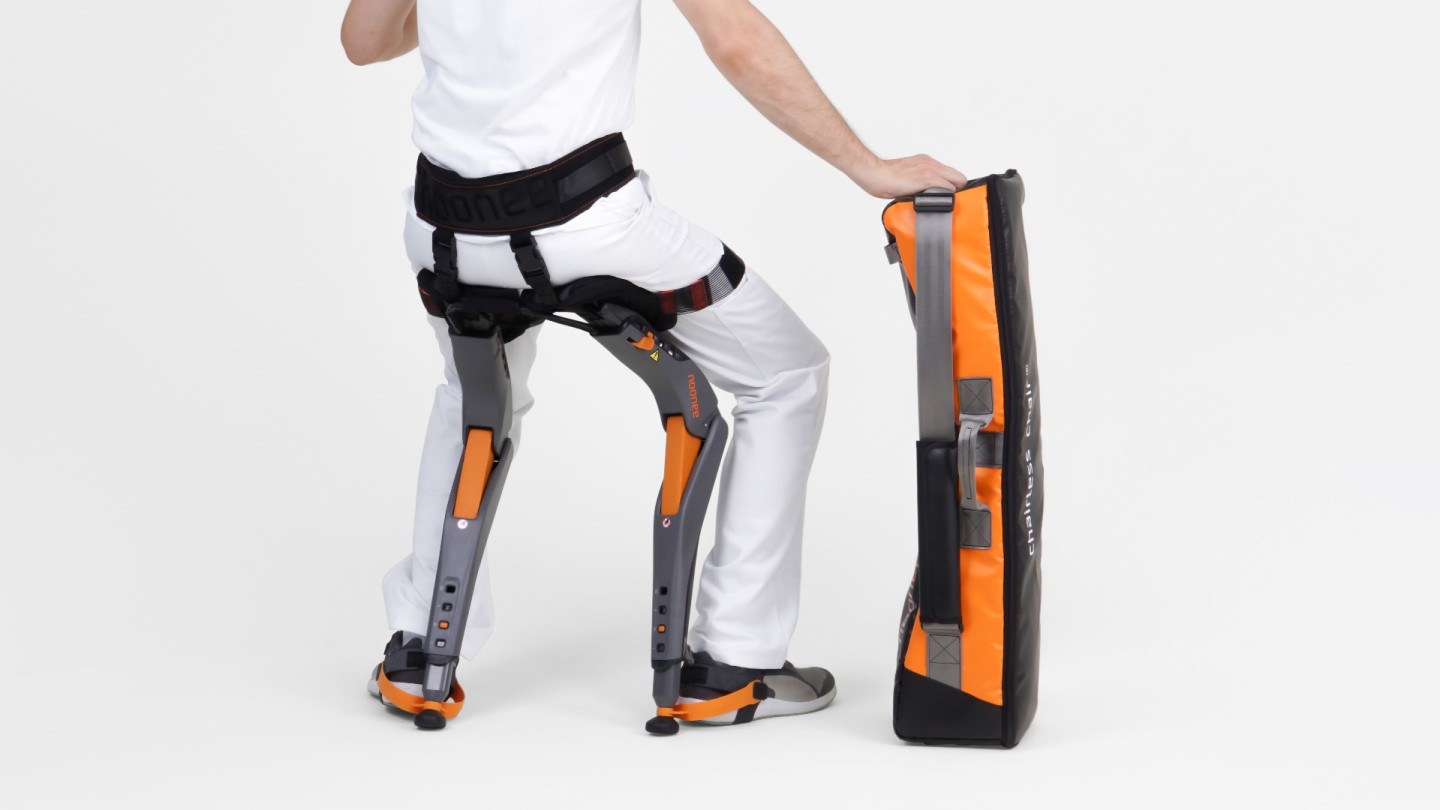
Exoskeleton for MATE by SSUR, IBI, and Comau
The Mate exoskeleton is the outcome of collaboration between the Italian BioRobotics Institute, Comau, and Icelandic non-invasive orthopedic business SSUR. It is lightweight upper body support with a built-in torque generator that generates a series of passive degrees to help the body move. This is made possible by the carbon fiber frame.
The device, which resembles a brace, fastens over the shoulders, back, and waist to reduce upper body stress. Without the use of batteries, motors, or other components that are prone to malfunction, we can simply adjust the support level to swiftly adapt to the continuing activity.
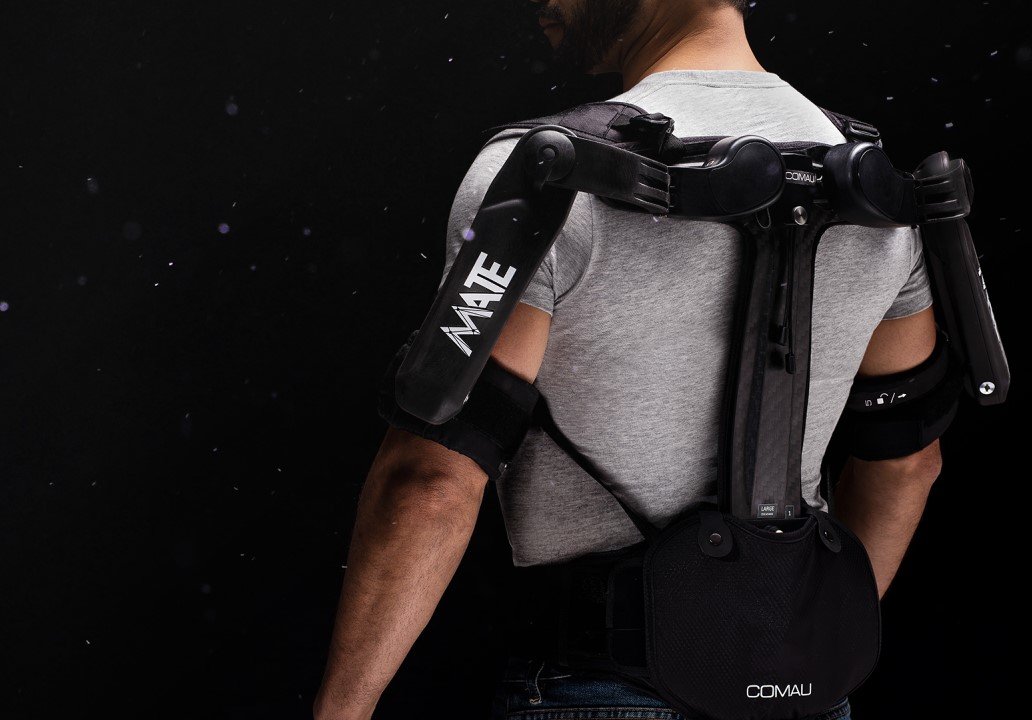
Chao Wang’s E-Knee
E-Knee is a special pad by Chao Wang and his colleagues that provides real-time and custom-sized support across a variety of sports and physical activities. The charged sleeve, which has a clear emphasis on the knee, has a 35-hour battery life and relieves discomfort or pressure brought on by an injury or illness.
It operates by employing built-in motion sensors that recognize various motion states and transmit the information to a central ARM chip through gyroscopes, all of which are housed inside a control box. After processing, this data pressurizes five airbags, which protect the kneecap, surrounding cartilage, and ligaments, and provide commands for modification. We can easily remove its control box when we need to clean the brace.

By Esko Bionics, EksoNR
Beyond injury prevention, rehabilitation is a fundamental use of exoskeletons. Devices like the EksoNR, a full-body brace for use with patients who require aid with movement, fit this demand. The gadget, which was initially to assist stroke survivors, imitates the normal movement of the legs and aids patients in relearning how to walk, sit, and carry out all of their previous activities.
It integrates motor support for diverse impairments across the body caused by an acquired brain injury with sensors and software that monitor and control leg movement to reduce compensatory gait patterns (ABI). It was reportedly the first exoskeleton device of its sort to be approved by the FDA for use.
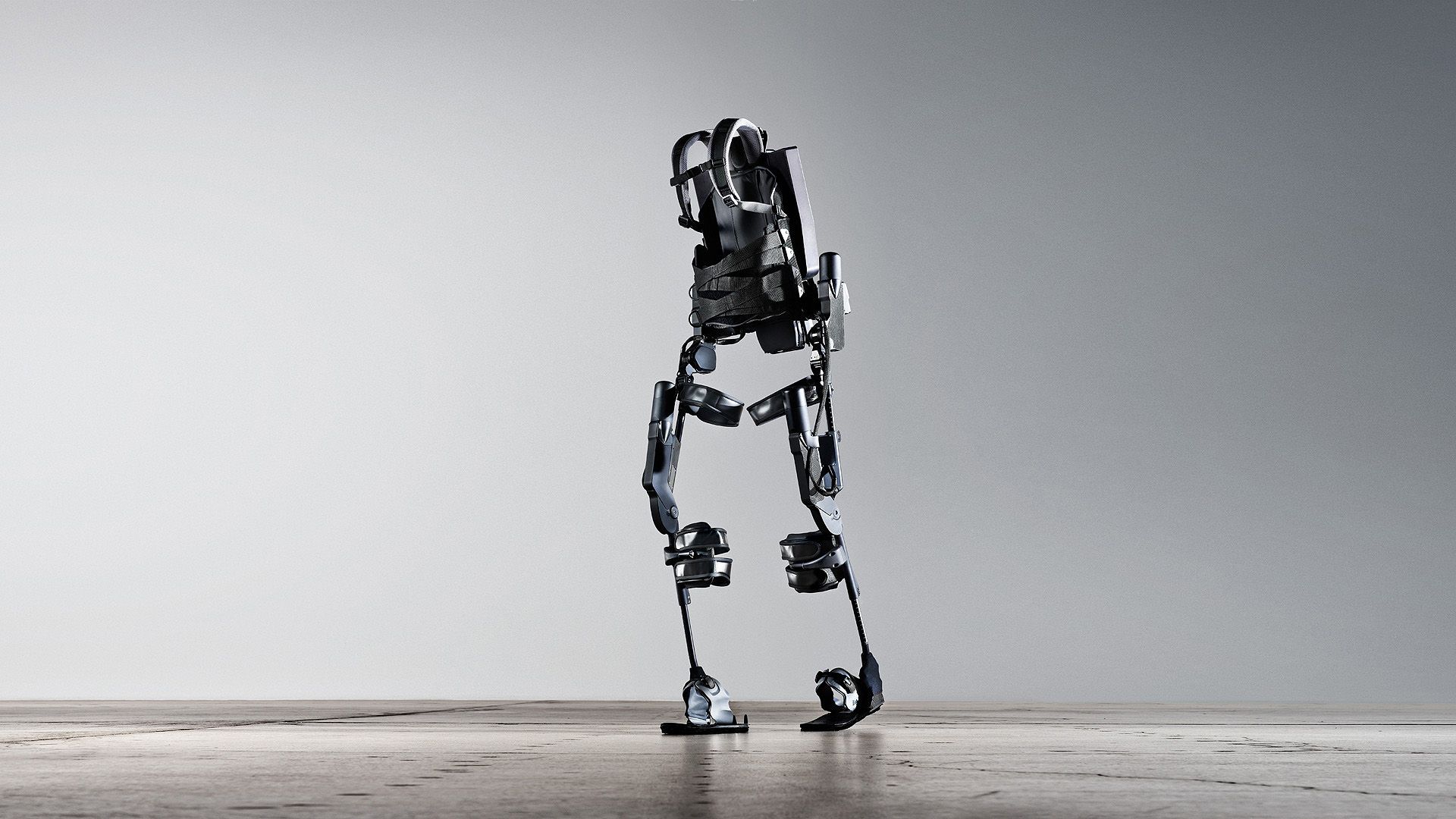
Sapetti’s Active Exoskeleton Concept
Design consultancy Sapetti, located in Switzerland, has created an active exoskeleton concept while experimenting with prospective production techniques. With the use of 3D printing, the design, which consists of a slim upper-body brace that supports the spine and neck while allowing for arm movement, achieves its ergonomic shape.

Robotics GEMS by Sungchan Ko
The following idea was by Samsung Electronics, which previously showed its wearable robot at CES. Since then, the Korea Institute for Robot Industry Advancement has validated it for its safety standards. It’s a waist and leg device that provides resistance along with walking assistance by applying torque to the hip joints. Samsung has also produced ankle and knee versions of the device, which are still in the idea stage.
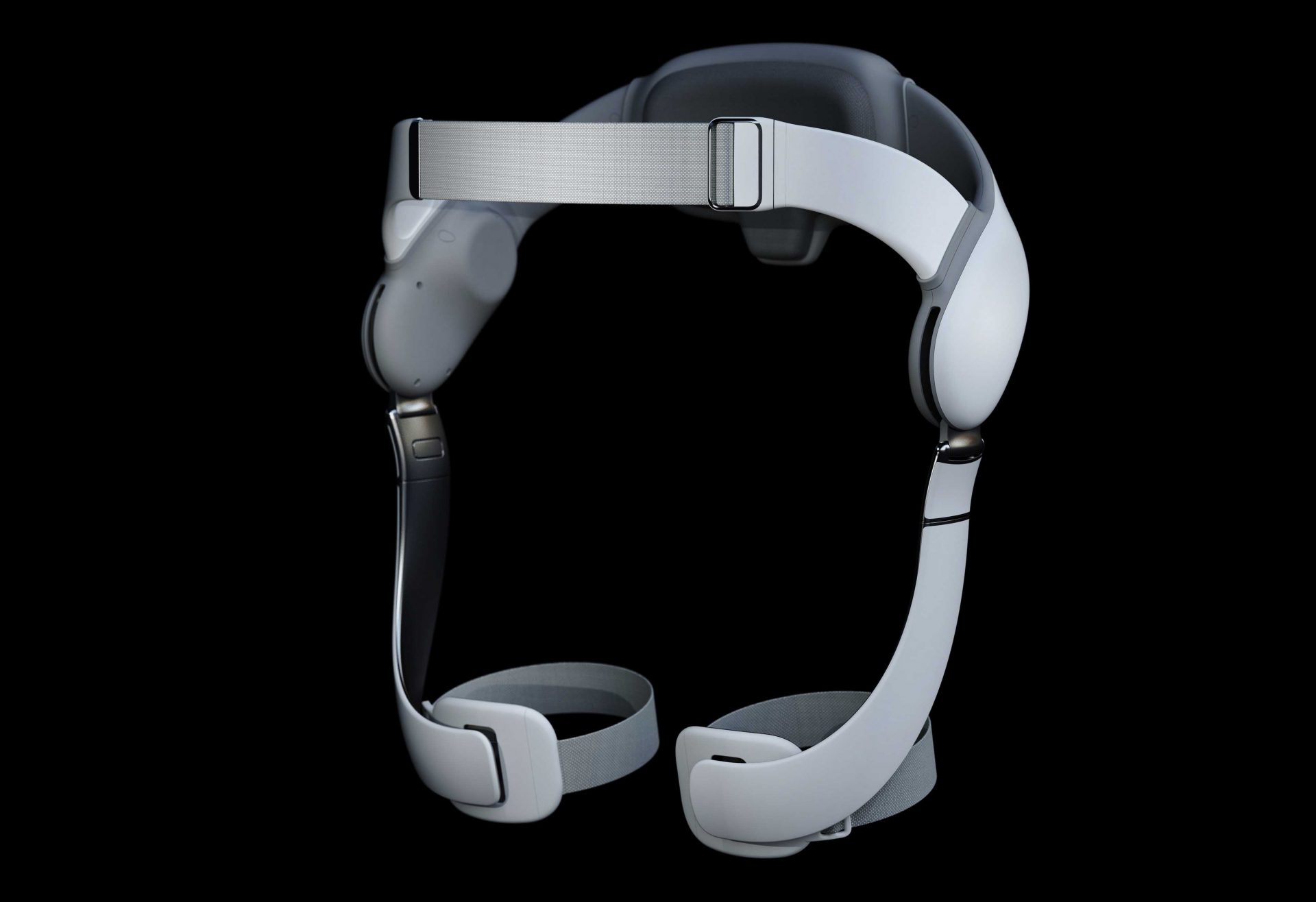
Liz Li’s Empower Exoskeleton
The Empower exoskeleton concept is for Parkinson’s patients and uses strong motors to help with upper body movement. It functions by making the dominant arm stronger to promote exercise and lessen the likelihood of long-term inactivity. This can result in various ailments.
Moreover, designer Liz Li opted for a simple, almost Apple-like appearance with streamlined components that fasten to a lightweight vest. For the user to readily check how much battery life is remaining in the smartphone. It also has a smart fingerprint lock and ring lights in every joint.
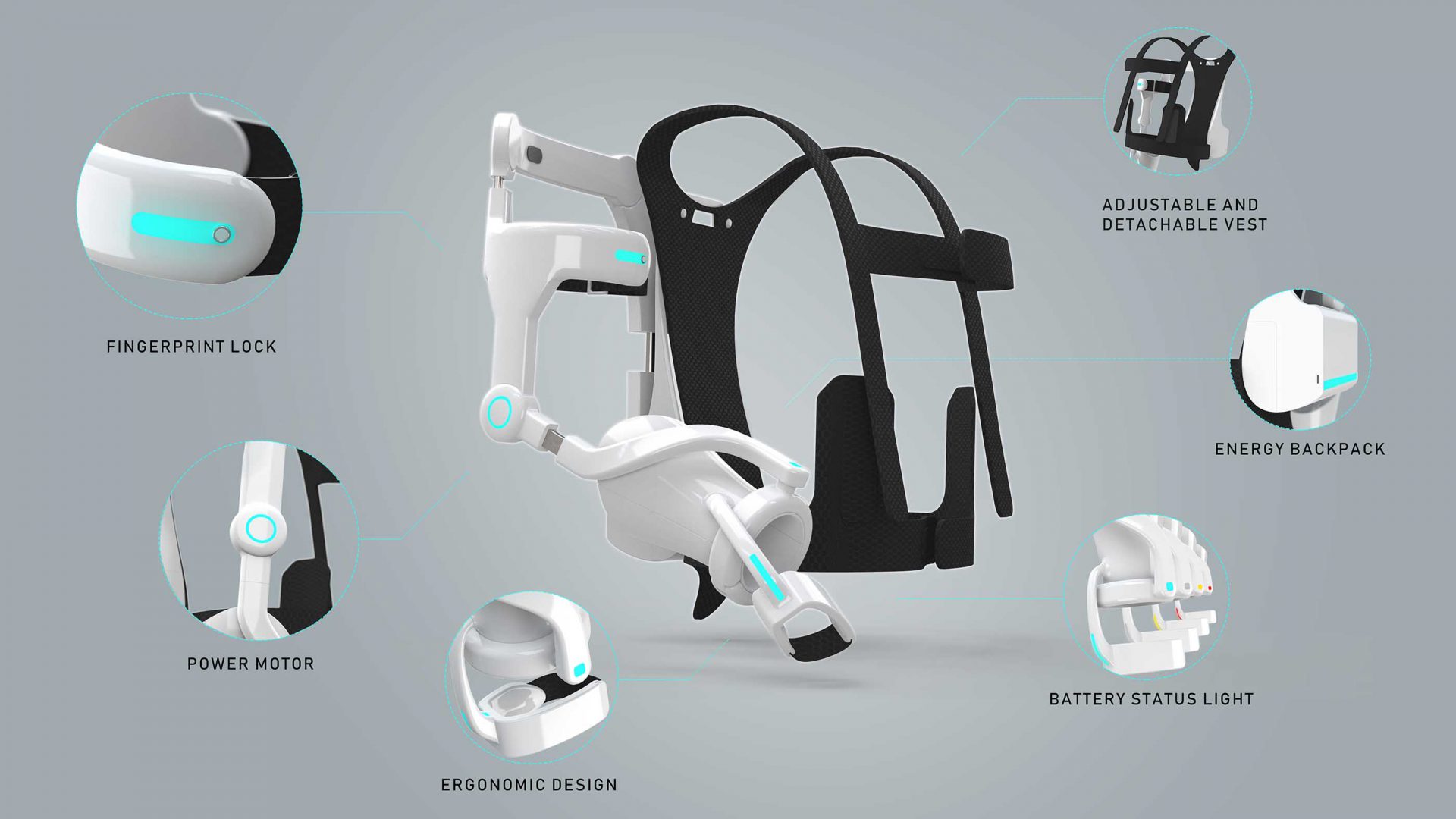
Read more on Archup:
Lenovo Smart Frame-art pieces & memorable moments on a digital canvas
Everywhere, all the time: designing experiences for an omnichannel world







